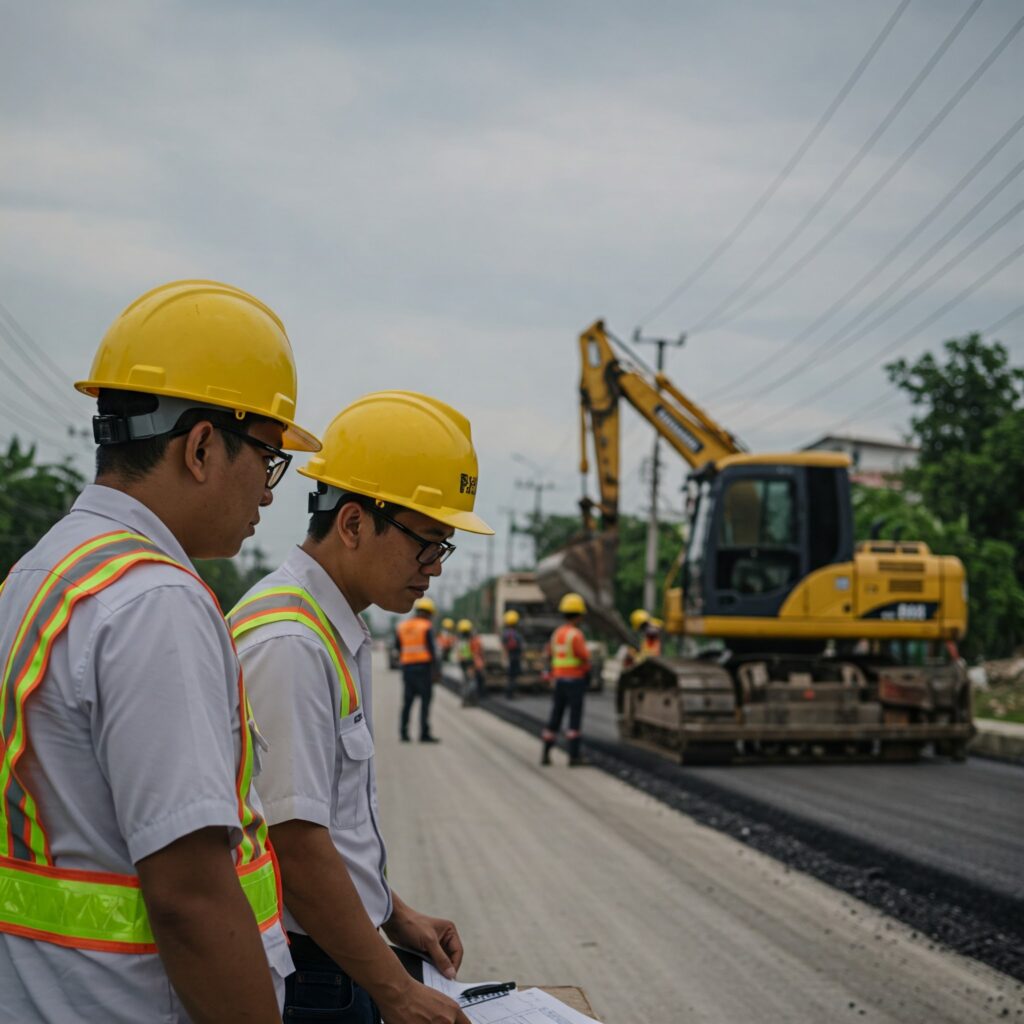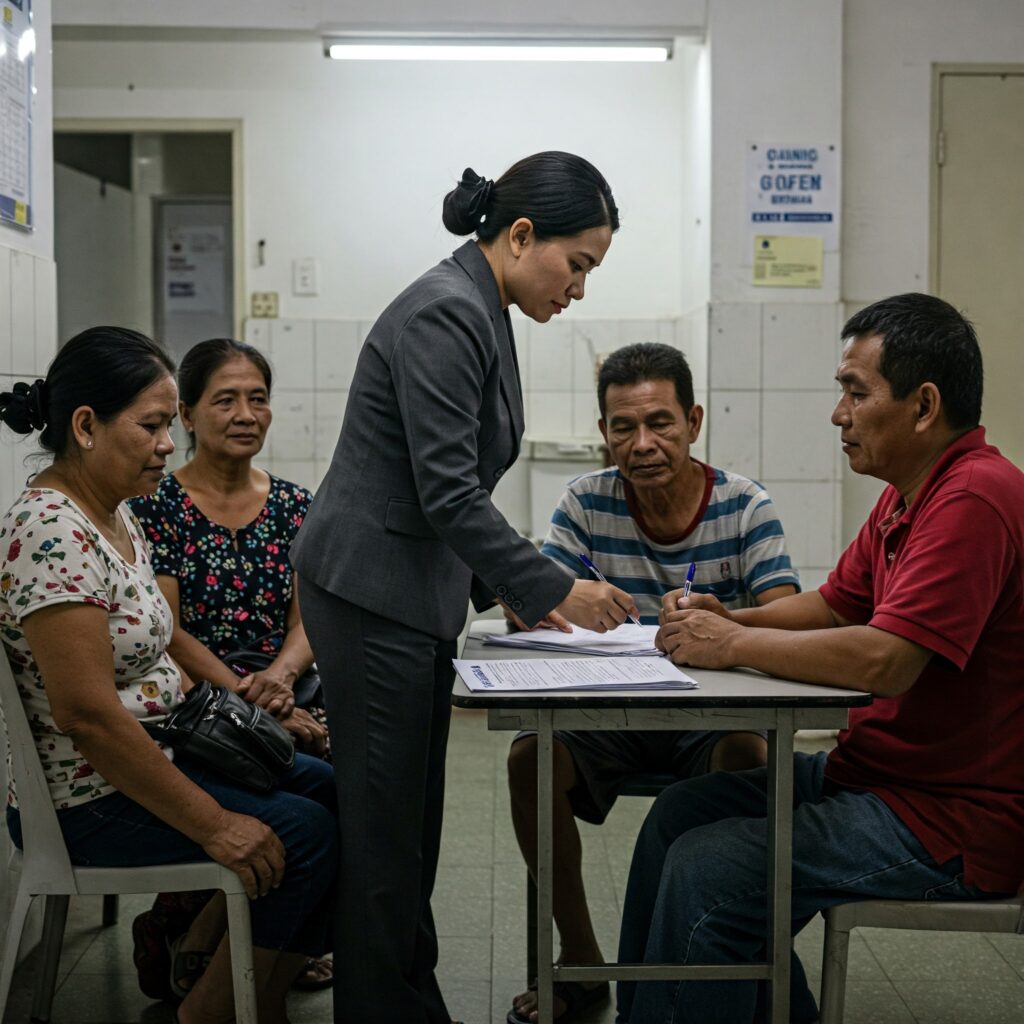Picture this: you’re cruising down a newly paved highway, smooth as butter, when suddenly you remember the pothole-riddled road it used to be. That transformation didn’t happen by magic – it’s all thanks to our friends at the Department of Public Works and Highways (DPWH). Established in 1898 during the American colonial period, the DPWH has evolved from its humble beginnings as the Bureau of Public Works to become the Philippines’ infrastructure powerhouse. Think of them as the country’s master builders, turning blueprints into bridges and dreams into driveways. They’re not just building roads; they’re paving the way for economic growth, connecting communities, and making sure you don’t spill your morning coffee during your commute.
The Road Warriors: DPWH’s Core Functions and Responsibilities
The DPWH isn’t just another government agency pushing papers around – they’re the ultimate multitaskers of infrastructure development. Their responsibilities are as wide as a six-lane highway, covering everything from planning and constructing national roads and bridges to maintaining flood control systems. But let’s break down their core functions in a way that won’t put you to sleep faster than a traffic jam:
| Core Function | Description | Impact |
|---|---|---|
| Planning & Design | Development of infrastructure blueprints and feasibility studies | Ensures project viability and sustainability |
| Construction | Implementation of road networks, bridges, and public buildings | Creates physical infrastructure connecting communities |
| Maintenance | Regular upkeep of existing infrastructure | Extends infrastructure lifespan and ensures safety |
| Quality Assurance | Monitoring and evaluation of construction standards | Guarantees infrastructure meets safety requirements |
| Contract Management | Oversight of project implementation and contractor relations | Ensures timely project completion within budget |
The Big Numbers: Infrastructure Investment Portfolio
Let’s talk money – because infrastructure development isn’t exactly pocket change. According to the DPWH’s 2023 annual report, the agency has been working harder than a coffee machine in a newsroom. Here’s a look at their recent investments:
| Year | Budget Allocation (in Billion PHP) | Number of Projects | Completion Rate |
|---|---|---|---|
| 2021 | 695.7 | 20,784 | 94% |
| 2022 | 686.1 | 21,456 | 92% |
| 2023 | 718.4 | 22,147 | 89% |
Source: DPWH Annual Reports 2021-2023
The Game Changers: Flagship Infrastructure Projects
Build, Build, Build and Beyond
Remember when “Build, Build, Build” wasn’t just a construction worker’s mantra but the Philippines’ battle cry for progress? The DPWH has been leading this infrastructure revolution with the enthusiasm of a kid with a new Lego set. The program has evolved into what we now know as the Infrastructure Flagship Projects (IFPs), targeting key areas of development that would make even the most ambitious city planner weak in the knees.
Major Road Networks
The DPWH has been busy connecting islands, cities, and communities faster than social media connects people. Some of their most impressive projects include:
| Project Name | Length (km) | Cost (Billion PHP) | Expected Completion |
|---|---|---|---|
| NLEX-SLEX Connector | 8.0 | 23.3 | 2024 |
| Cebu-Cordova Link Expressway | 8.9 | 30.0 | Completed 2022 |
| Davao City Bypass | 45.5 | 46.0 | 2024 |
Source: DPWH Project Database 2024
The Secret Sauce: Technology and Innovation in Infrastructure
Digital Transformation
Gone are the days when infrastructure planning meant just pencils and papers. The DPWH has embraced technology faster than a teenager adopts new social media trends. They’re now using Building Information Modeling (BIM), Geographic Information Systems (GIS), and drone technology for project monitoring. It’s like giving Superman x-ray vision, but for infrastructure development.
Sustainable Development
The DPWH isn’t just building roads; they’re building a future that would make Mother Nature proud. They’ve implemented green building standards and sustainable construction practices that consider environmental impact. Think solar-powered street lights, rainwater harvesting systems, and materials that are more eco-friendly than your reusable coffee cup.
The People Behind the Projects: DPWH Workforce
Behind every successful infrastructure project is a team of dedicated professionals who probably consume more coffee than a university during finals week. The DPWH employs thousands of engineers, architects, planners, and support staff who work tirelessly to turn infrastructure dreams into reality. According to their Human Resource Department:
| Position Category | Number of Personnel | Percentage of Workforce |
|---|---|---|
| Technical Staff | 9,845 | 45% |
| Administrative | 7,876 | 36% |
| Support Services | 4,179 | 19% |
Source: DPWH HR Database 2023
Challenges and Solutions: Navigating the Infrastructure Landscape
The Road Blocks
Let’s face it – building infrastructure isn’t all sunshine and smoothly paved roads. The DPWH faces challenges that would make a video game boss battle look like a walk in the park:
- Right-of-way issues that are more complicated than your relationship status
- Weather disruptions that seem to have a personal vendetta against construction schedules
- Budget constraints tighter than skinny jeans
- Coordination with various stakeholders who sometimes have more opinions than a social media comments section
The Way Forward
But like any good protagonist, the DPWH has developed strategies to overcome these challenges:
- Implementation of advanced project management systems
- Strengthening partnerships with local government units
- Enhanced stakeholder engagement programs
- Adoption of climate-resilient infrastructure designs
The Economic Impact: More Than Just Roads and Bridges
The DPWH’s projects aren’t just about getting from point A to point B – they’re about boosting the economy faster than a double shot of espresso. According to the National Economic and Development Authority (NEDA), infrastructure development has significant multiplier effects:
| Economic Indicator | Impact Percentage |
|---|---|
| GDP Growth | +1.5-2% annually |
| Job Creation | 240,000+ jobs (2023) |
| Tourism Growth | +12% in accessible areas |
| Property Value Increase | +15-20% near new infrastructure |
Source: NEDA Economic Impact Assessment 2023
Future Horizons: What’s Next for DPWH
The 2025-2030 Infrastructure Development Plan
The DPWH isn’t resting on its laurels – they’re planning future projects with the excitement of a kid planning their birthday party. The upcoming infrastructure pipeline includes:
- Smart city infrastructure integration
- Climate-resilient transportation networks
- Green building initiatives
- Enhanced connectivity to rural areas
Innovation and Technology Integration
The future of infrastructure development looks more high-tech than a sci-fi movie:
- AI-powered maintenance prediction systems
- IoT sensors for real-time infrastructure monitoring
- Automated construction processes
- Advanced materials research and development
The Citizen’s Role: Public Participation in Infrastructure Development
Infrastructure development isn’t just a one-way street – it’s a collaborative effort between the DPWH and the public. Citizens can participate through:
- Public consultations that are more interactive than your favorite reality TV show
- Online feedback platforms where you can report issues faster than posting your lunch photos
- Community engagement programs that bring people together better than a sale at the mall
- Infrastructure monitoring initiatives that turn citizens into infrastructure guardians
Conclusion: Building Tomorrow, Today
The DPWH’s role in infrastructure development is more crucial than ever – they’re not just building structures; they’re building the foundation for the Philippines’ future. With continued investment, innovation, and public support, the agency continues to transform the nation’s infrastructure landscape one project at a time.
Remember, good infrastructure is like a good joke – it connects things seamlessly and makes everyone’s life better. The DPWH is working hard to ensure that the Philippines’ infrastructure network becomes more reliable than your favorite delivery app and more impressive than your social media feed.
Disclaimer: This blog post contains information sourced from official DPWH reports, NEDA assessments, and public documents as of 2024. While every effort has been made to ensure accuracy, infrastructure projects are dynamic and subject to changes in timeline, scope, and budget. For the most current project status and information, please visit the official DPWH website. If you notice any inaccuracies in this article, please report them to our editorial team for prompt verification and correction.




